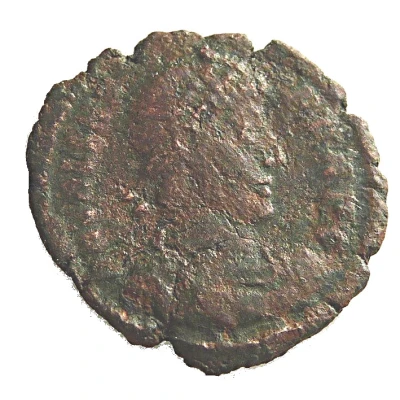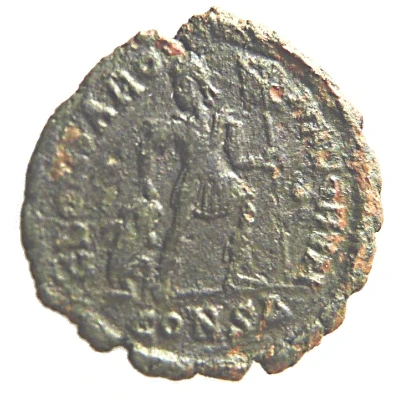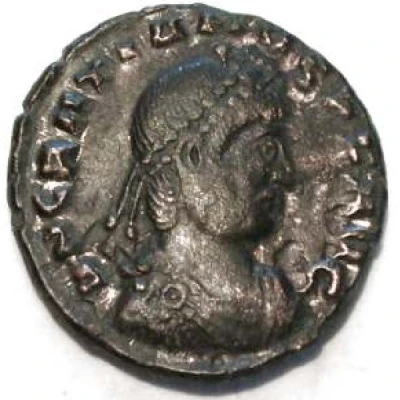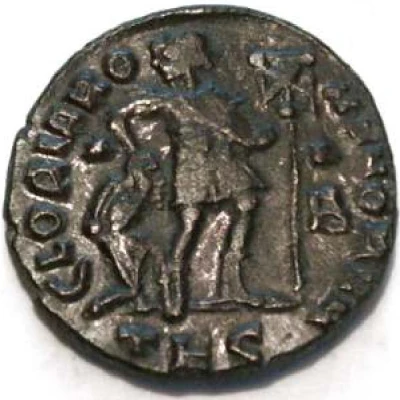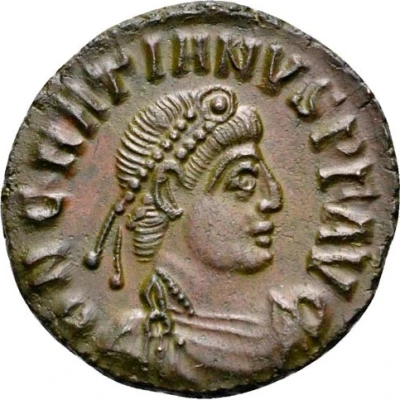
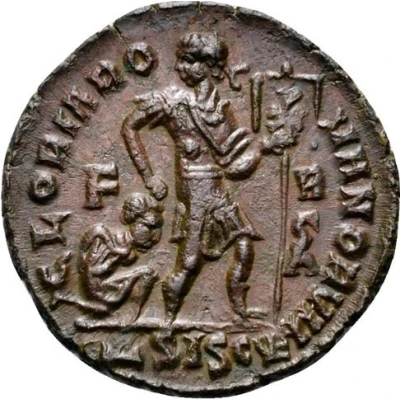

Nummus - Gratianus GLORIA ROMANORVM; Siscia
| Bronze | 2.26 g | 17.5 mm |
| Issuer | Rome › Roman Empire (27 BC - 395 AD) |
|---|---|
| Emperor | Gratian (367-383) |
| Type | Standard circulation coin |
| Years | 367-375 |
| Value | Follis (1⁄180) |
| Currency | Solidus, Reform of Constantine (AD 310/324 – 395) |
| Composition | Bronze |
| Weight | 2.26 g |
| Diameter | 17.5 mm |
| Thickness | 1 mm |
| Shape | Round (irregular) |
| Technique | Hammered |
| Orientation | Coin alignment ↑↓ |
| Demonetized | Yes |
| Updated | 2024-10-04 |
| Numista | N#42926 |
|---|---|
| Rarity index | 54% |
Reverse
Gratian walking right, holding labarum and dragging captive.
Letters in left and right fields.
Officina and mintmark in exergue.
Scripts: Latin, Greek
Lettering: GLORIA RO-MANORVM
Unabridged legend: Gloria Romanorum.
Translation: To the Glory of the Romans.
Comment
The bust on the obverse is of Emperor Gratian, however the ruling authority behind this coin was actually Valentinian I. In summer 367, Valentinian became ill at Civitas Ambianensium (Amiens), raising questions about his succession. On recovery, he presented his then eight-year-old son Gratian to his troops on 24 August, as his co-augustus (r. 367–383), for political reasons. Indeed there exists a
Solidus of Valentinian I showing Valentinian and Gratian on the reverse. When his father died on 17 November 375, Gratian inherited the administration of the western empire. As this coin was minted from AD 367 to 375, it actually reflects Valentinian I's administration, as Gratian was a child of 8 to 14years old.
Curiously, most of these Siscia (Croatia) minted coins were found in hoards in Great Britain, as a result of the Great Conspiracy. The Great Conspiracy was a year-long state of war and disorder that occurred in Roman Britain starting in 368. Valentinian paid his reinforcement troops sent to Britania to suppress the revolt with this type of coins, where they were later circulating in great numbers.
Interesting fact
One interesting fact about this coin is that it features the first Christian emperor, Gratian, who ruled the Roman Empire from 367 to 375 AD. The coin's design includes the inscription "GLORIA ROMANORVM" which means "Glory of the Romans," and it was minted in Siscia, which is now modern-day Croatia. This coin is a rare example of early Christian Roman coinage and is highly sought after by collectors.
